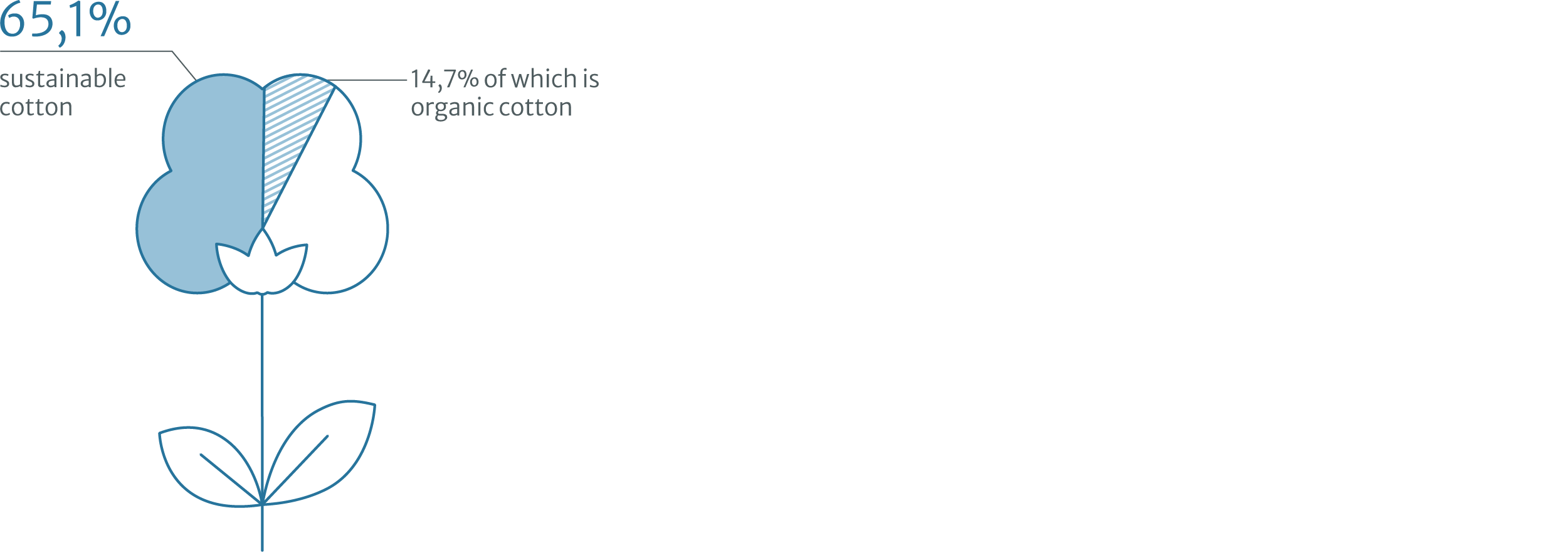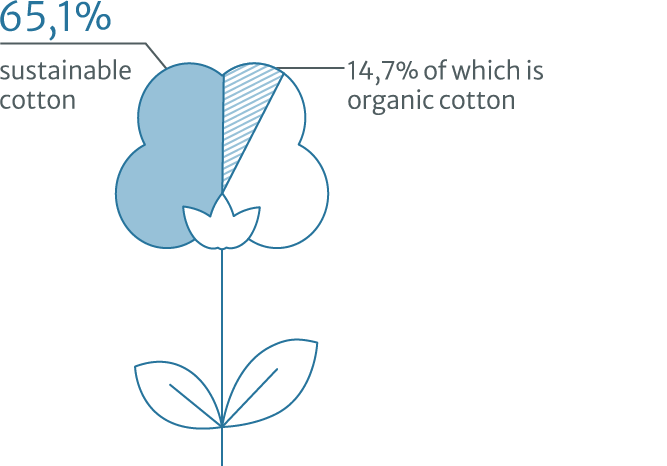Chapter 4.1
Introduction
2021 Review Process
Implementing and reporting on due diligence in a structured manner
The Review Process stands for the individual responsibility of the companies in the Partnership for Sustainable Textiles to implement due diligence in their supply network.
The Textiles Partnership had fundamentally revised the Review Process on the basis of OECD recommendations. It is now focusing even more strongly than before on the continuous improvement of social and ecological conditions in the value chain in line with the OECD due diligence guideline.
The Review Process should have taken place in 2020, but was suspended due to the COVID-19 pandemic, so it was carried out for the first time in its revised version in 2021. Despite the ongoing challenges associated with the pandemic, companies have participated in the Review Process and provided the necessary resources.
About the Review Process
The members of the Partnership for Sustainable Textiles work together for social, ecological and economic improvements along the entire textile supply chain. Their individual commitment to this common goal will be concretized and documented in the Review Process. The basis of the Review Process is the risk analysis and risk prioritization along eleven social, ecological and corruption risks. On this basis, member companies derive goals to prevent potential risks and mitigate actual negative effects.
For the first time, one-day assessment meetings for evaluation and consultation took place. A tandem of Partnership secretariat and independent experts evaluated the risk analyses and action plans that the companies had previously entered in the Partnership’s own reporting tool TexPerT. In addition to the individual progress made since the last Review Process, the tandem also checked whether the new goals are derived meaningfully and comprehensibly from the risk analysis and whether the goals are sufficiently ambitious. After the discussion, the companies were able to revise their risk analysis as well as the goals and measures once again.
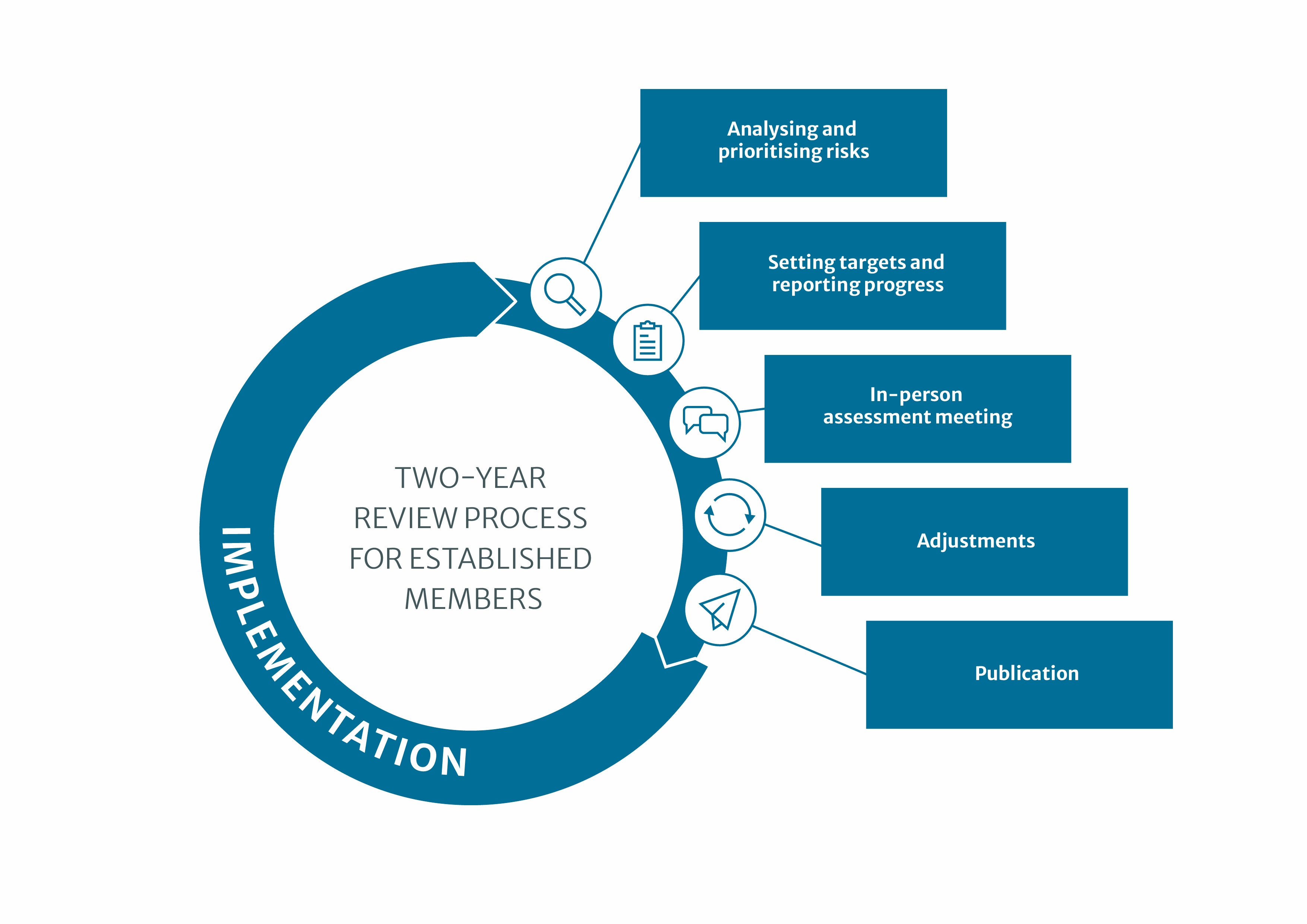

During the assessment meetings, we were able to conduct an in-depth discussion with the companies on the requirements for a systematic risk analysis in accordance with OECD guidelines. For many, analyzing the entire supply chain was new and challenging. Our impression is that the Review Process sensitizes companies to a systematic and overarching risk analysis that focuses on the entire supply chain. We have often seen a positive development from the first versions to the reports that have now been published.
Sibylle Baumgartner von focusright, one of the independent experts, on the assessment meetings
104 members participated in the 2021 Review Process
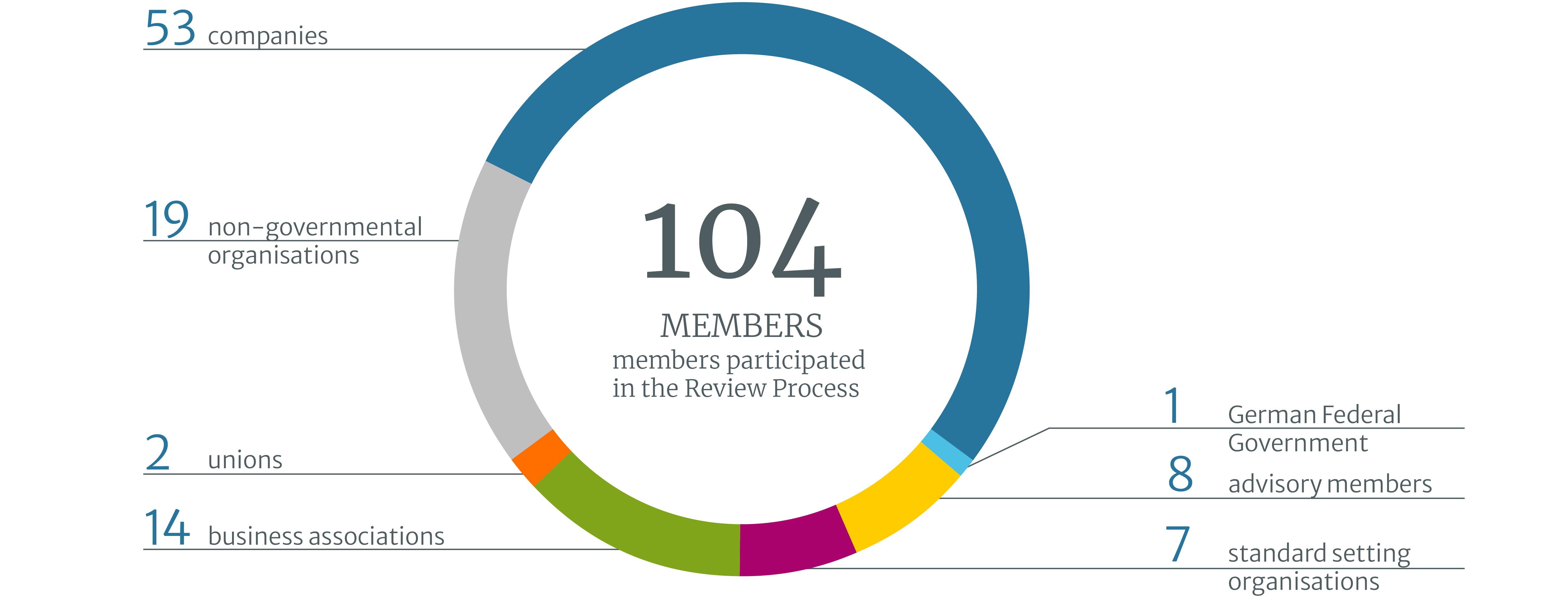
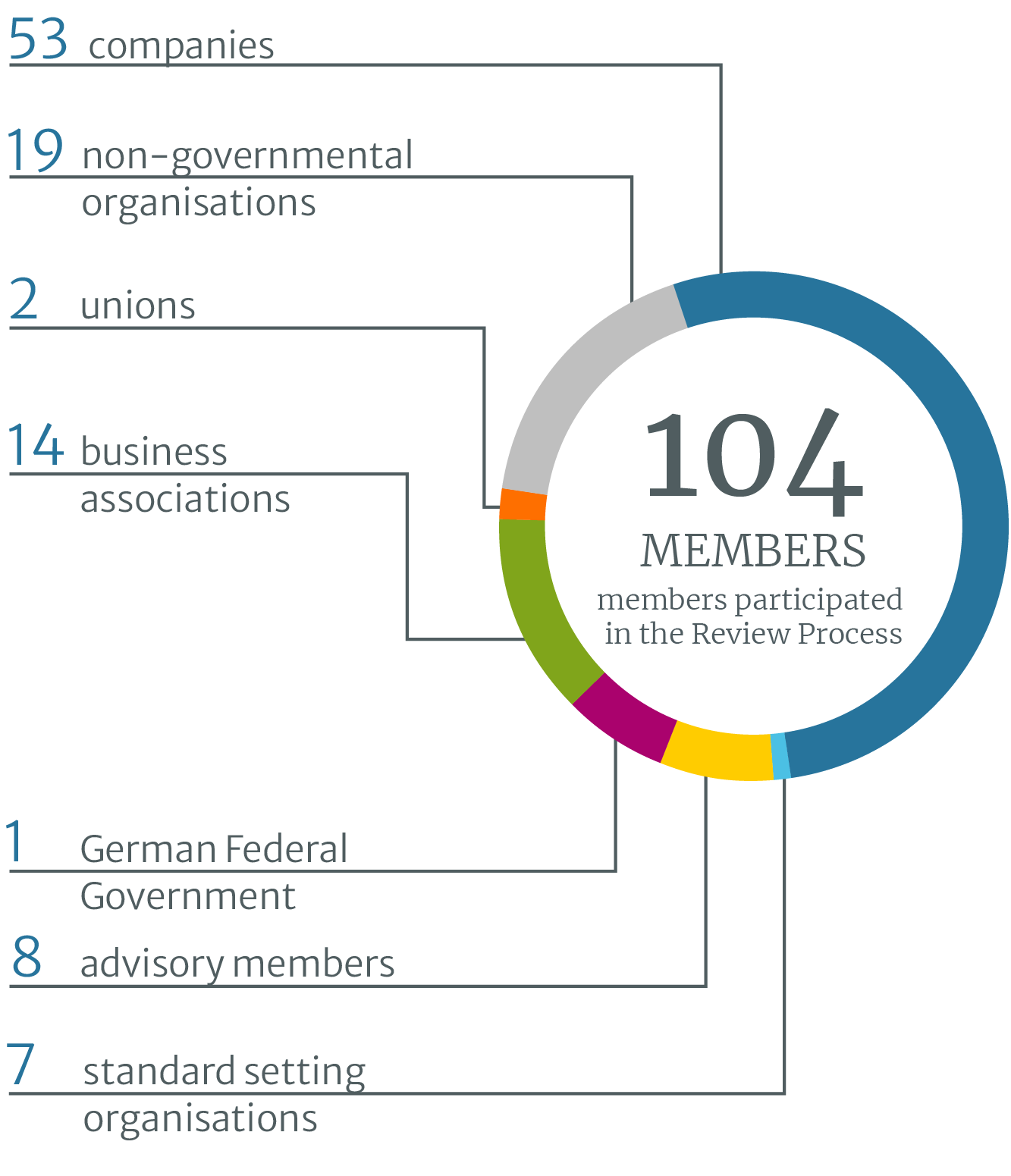
Joint goal for sustainable cotton
The Partnership companies are only a few steps away from the common cotton target. By 2025, the share of sustainable cotton is to be increased to a total of 70 percent and the proportion of organic cotton contained in it to 20 percent. In the 2021 Review Process, the Partnership companies stated that they procured 971,471 tons of cotton, of which 14.7 percent were organic cotton or in-conversion and 50.4 percent cotton from other sources recognized as sustainable.
In 2018, of almost 800,000 tons, only 10.5 percent were from organic cultivation and 21.7 percent from other sources recognized as sustainable. This means that the share of sustainable cotton has more than doubled from 32.2 percent to 65.1 percent.
Which cotton standards are recognized can be read here.
